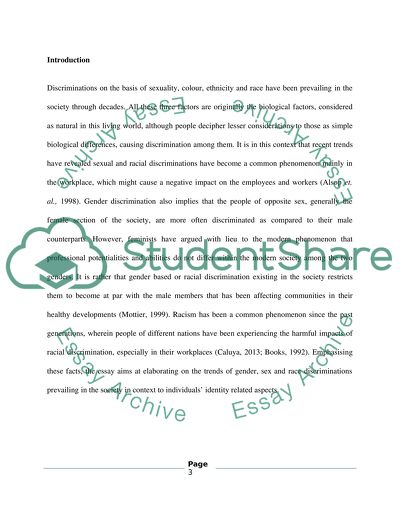Cite this document
(“Gender, sexuality, and race are less biological facts than the outcome Essay”, n.d.)
Gender, sexuality, and race are less biological facts than the outcome Essay. Retrieved from https://studentshare.org/journalism-communication/1696724-gender-sexuality-and-race-are-less-biological-facts-than-the-outcome-of-contextually-specific-discourses-and-discursive-practices-explain-with-reference-to-no-more-than-two-aspects-of-identity
Gender, sexuality, and race are less biological facts than the outcome Essay. Retrieved from https://studentshare.org/journalism-communication/1696724-gender-sexuality-and-race-are-less-biological-facts-than-the-outcome-of-contextually-specific-discourses-and-discursive-practices-explain-with-reference-to-no-more-than-two-aspects-of-identity
(Gender, Sexuality, and Race Are Less Biological Facts Than the Outcome Essay)
Gender, Sexuality, and Race Are Less Biological Facts Than the Outcome Essay. https://studentshare.org/journalism-communication/1696724-gender-sexuality-and-race-are-less-biological-facts-than-the-outcome-of-contextually-specific-discourses-and-discursive-practices-explain-with-reference-to-no-more-than-two-aspects-of-identity.
Gender, Sexuality, and Race Are Less Biological Facts Than the Outcome Essay. https://studentshare.org/journalism-communication/1696724-gender-sexuality-and-race-are-less-biological-facts-than-the-outcome-of-contextually-specific-discourses-and-discursive-practices-explain-with-reference-to-no-more-than-two-aspects-of-identity.
“Gender, Sexuality, and Race Are Less Biological Facts Than the Outcome Essay”, n.d. https://studentshare.org/journalism-communication/1696724-gender-sexuality-and-race-are-less-biological-facts-than-the-outcome-of-contextually-specific-discourses-and-discursive-practices-explain-with-reference-to-no-more-than-two-aspects-of-identity.


